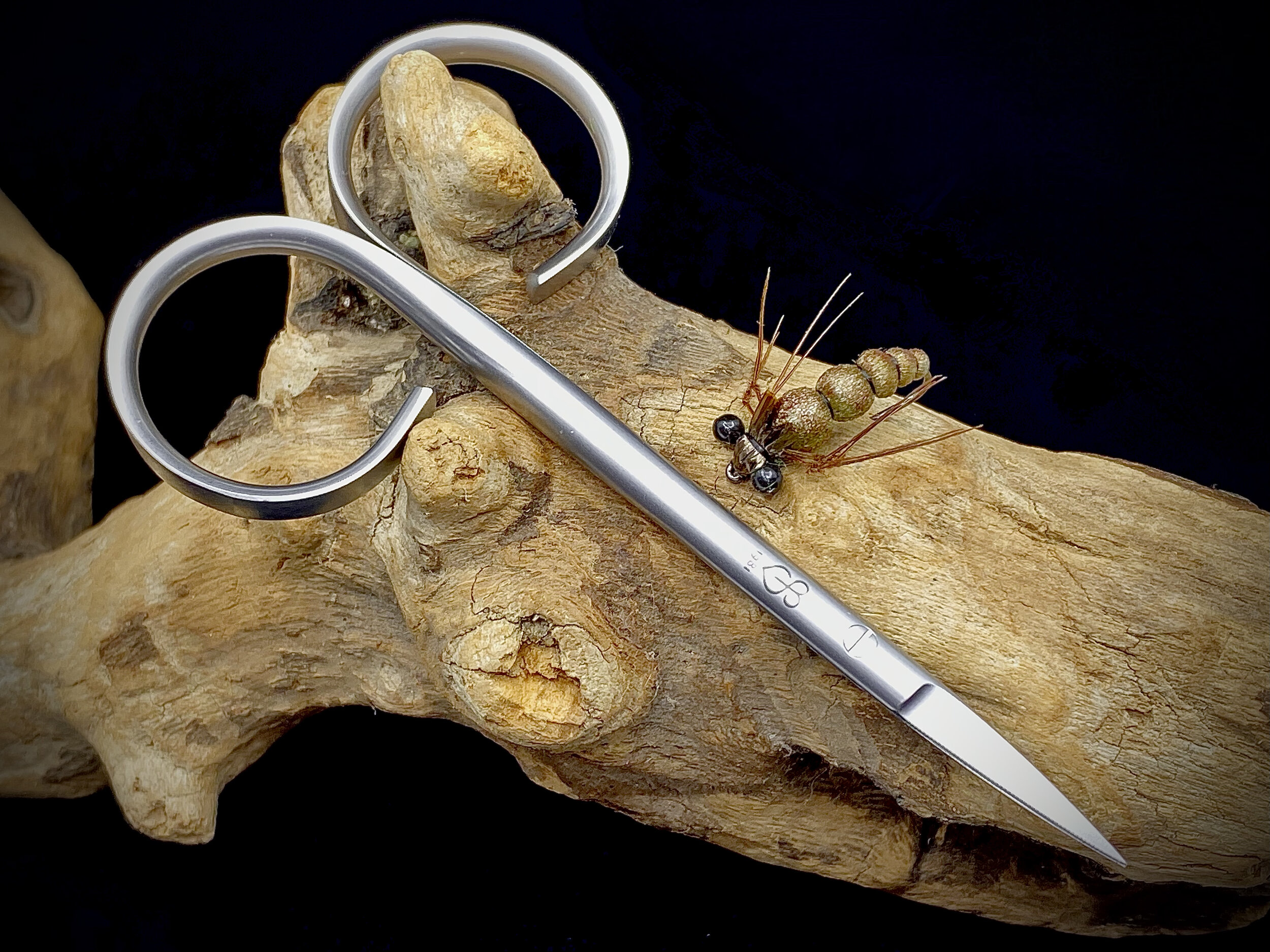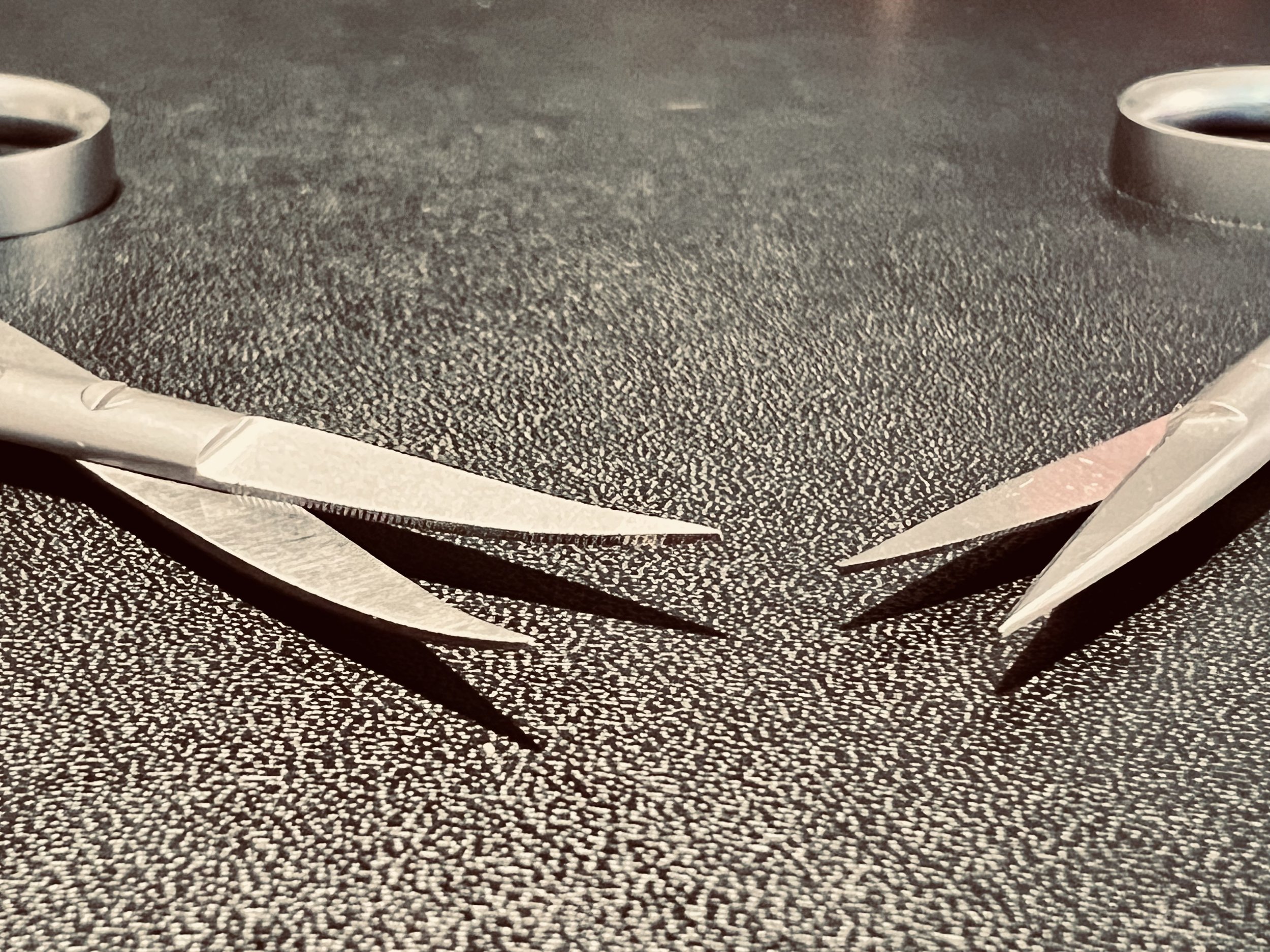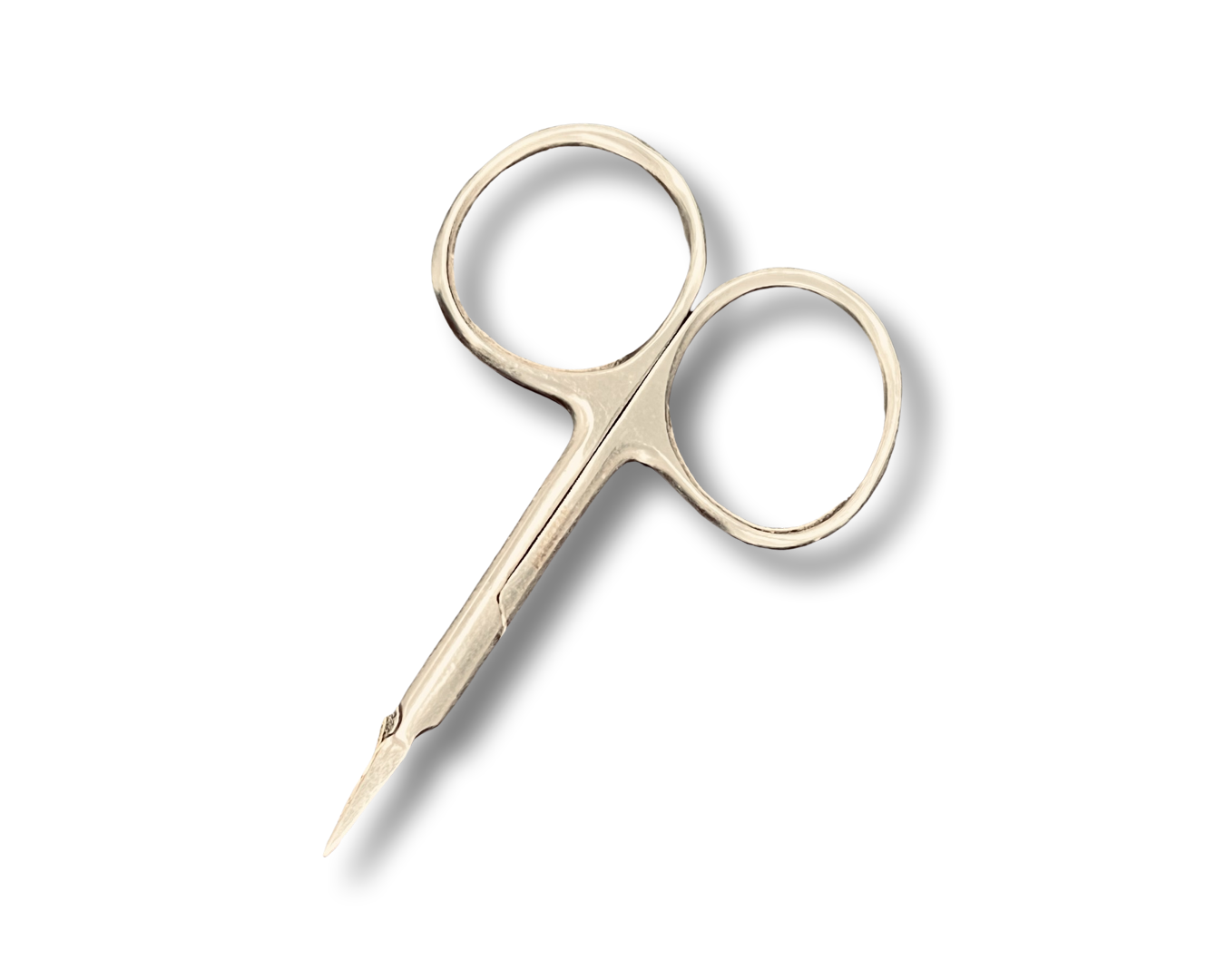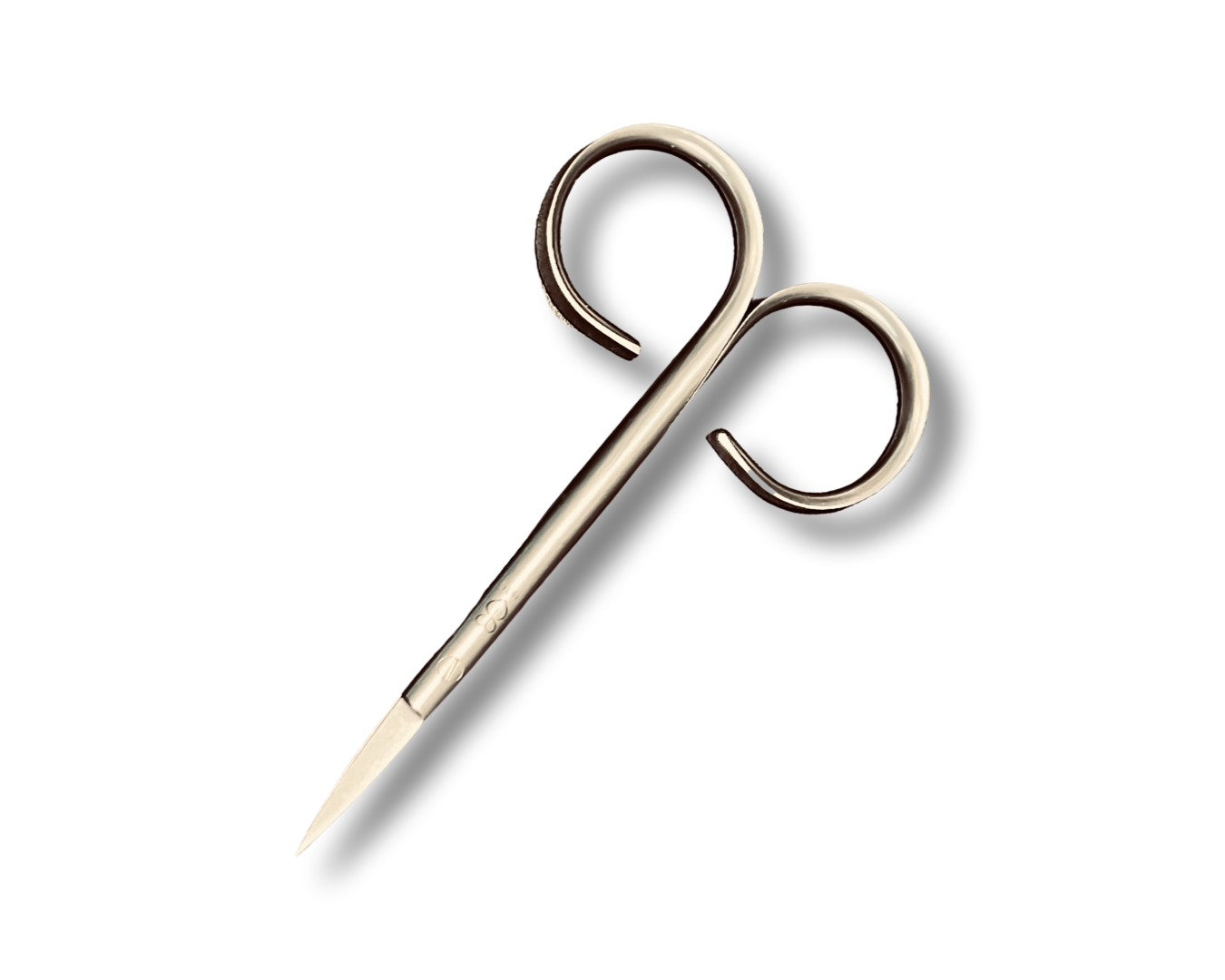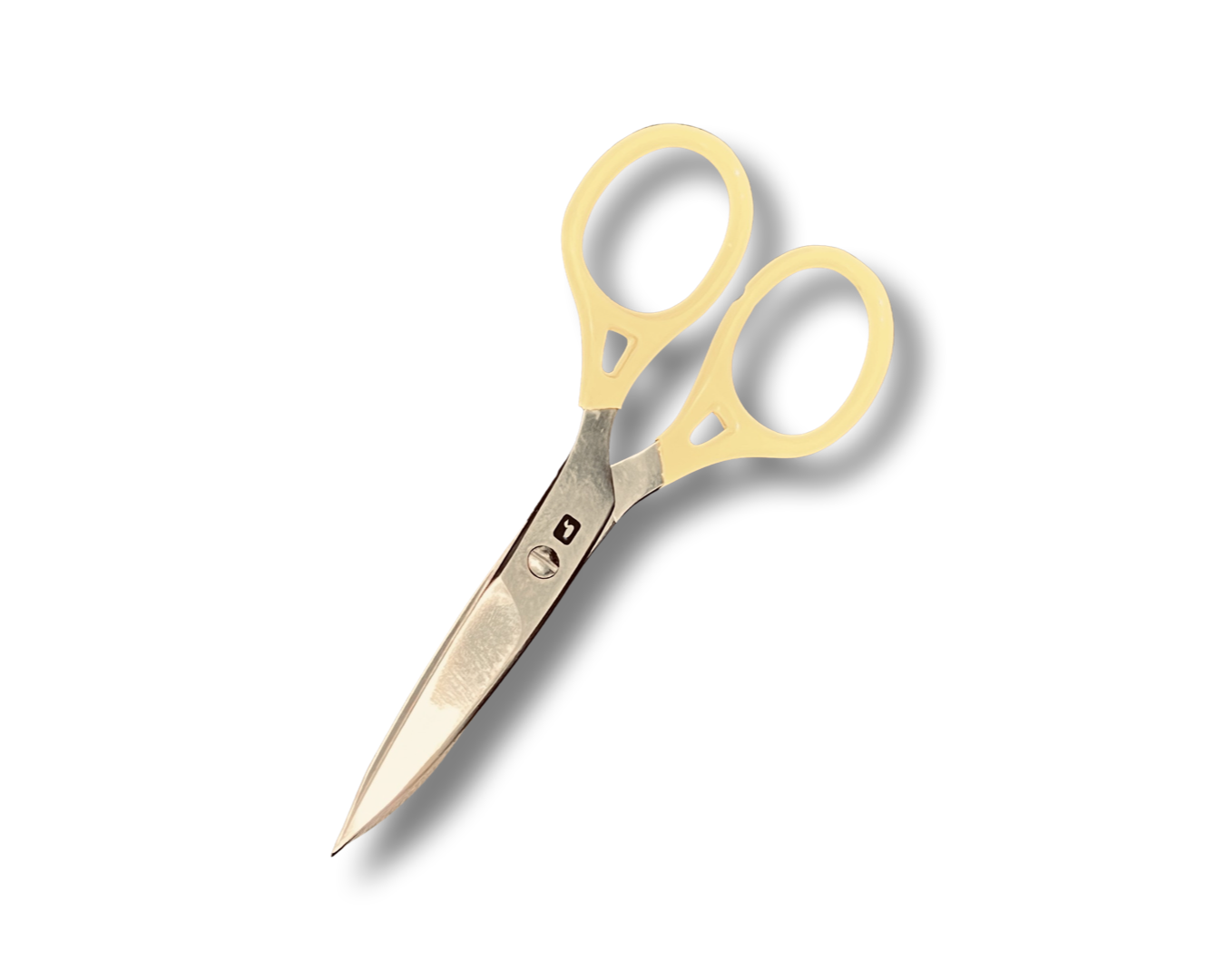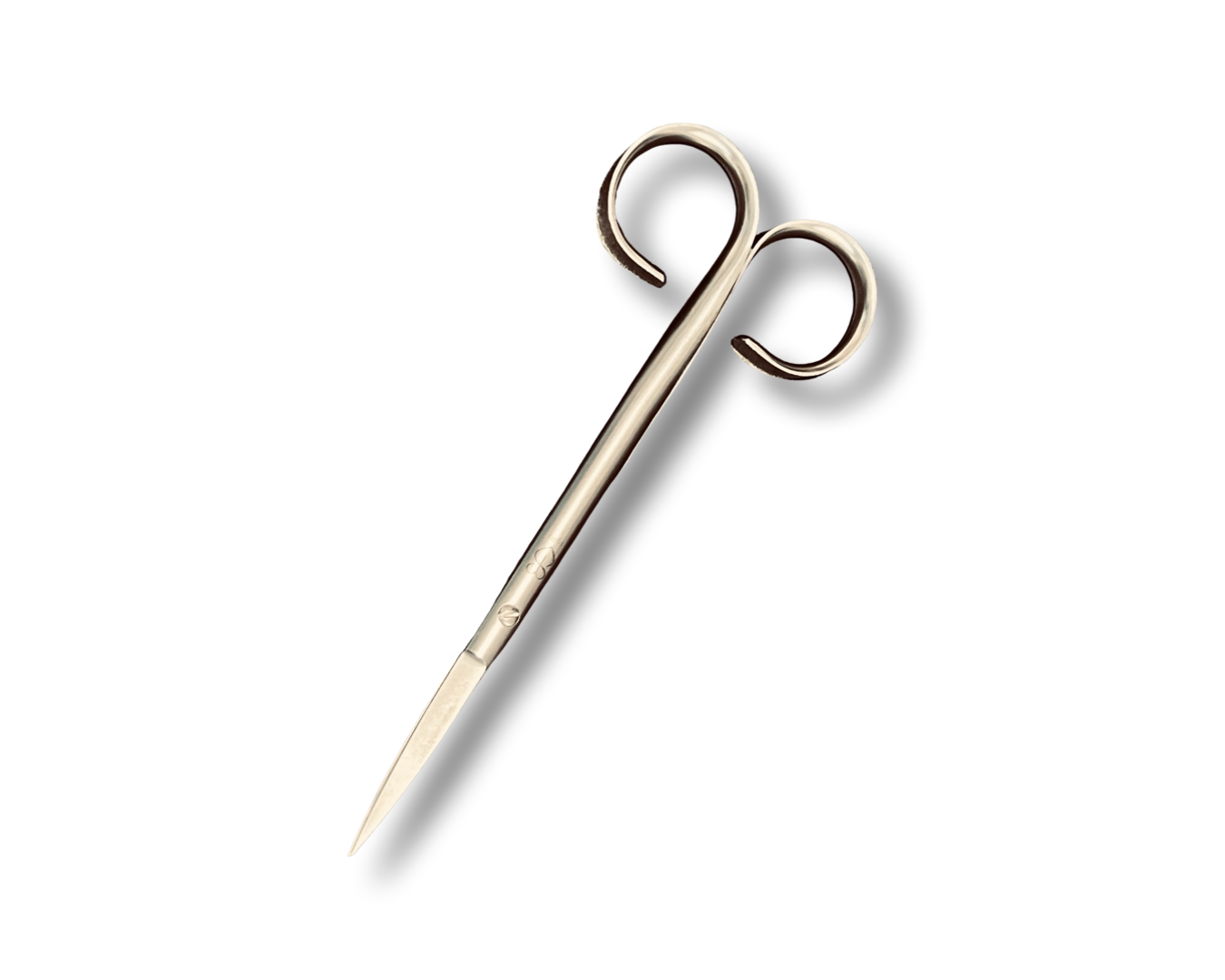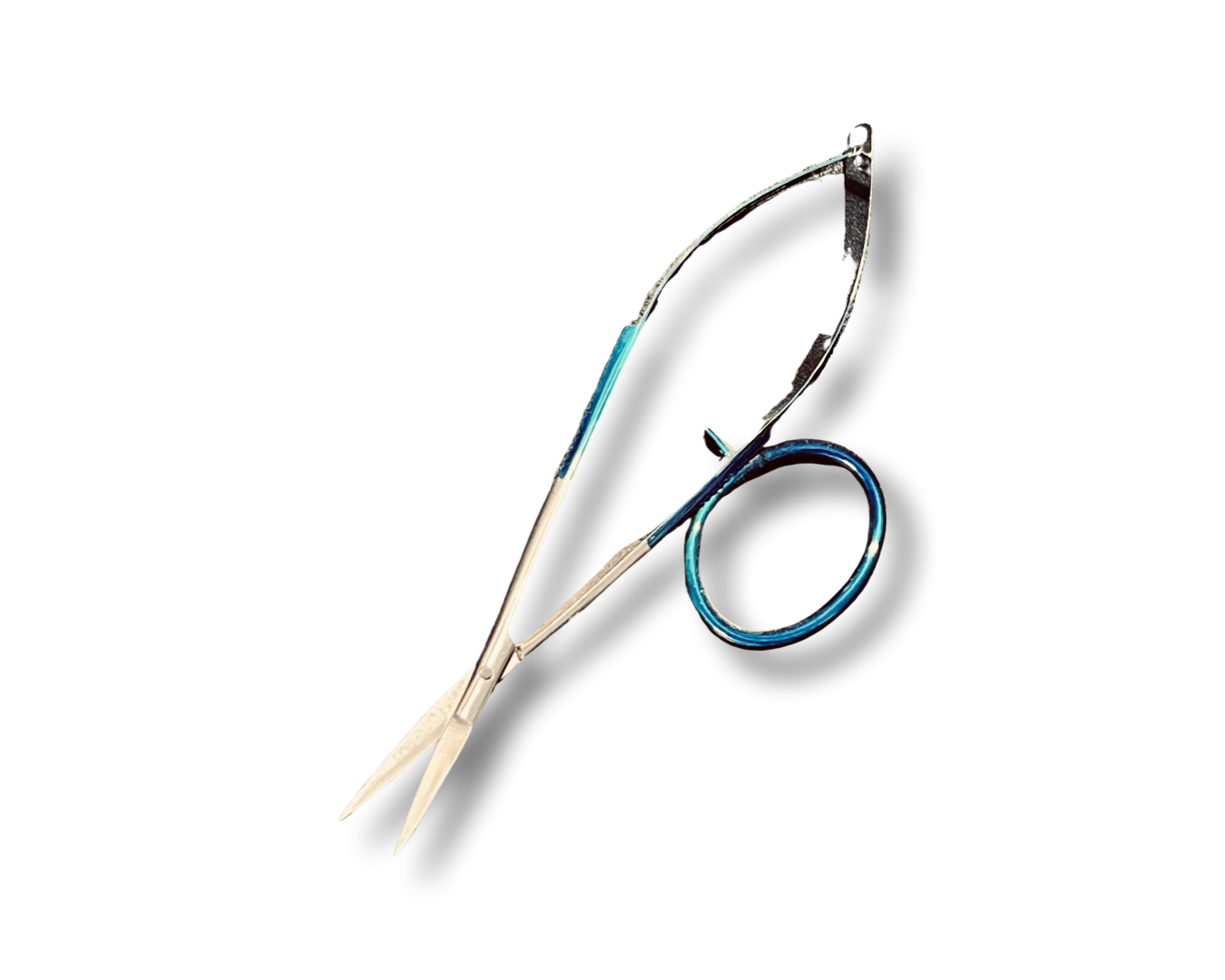If you are shopping for a new pair of fly tying scissors or are looking to get your first pair, the number of choices can be bewildering. This post will explain the differences between the multiple options available to today's fly tier.
In the classes I teach, I am often asked if purchasing a fly tying kit is a good idea. Although there are a few suitable kits on the market today, the main reason I discourage students from buying kits is the quality of the tools provided. My advice is to buy the best vise your budget will allow, and then the second item to invest in is a quality pair of scissors. In my opinion, those two tools are the most important. The rest of the required tools do not rely on quality as much as those two items.
How much is too much?
So how much do you have to spend on quality scissors? Fortunately, some excellent options won't break the bank. Prices range from just a few dollars to a hundred or more. So what's the difference between a hundred-dollar pair of scissors and a ten-dollar pair? Quite a lot. Higher priced scissors will be constructed well, made of better steel with sharper edges; they will have fine, perfectly matched points and stay sharp much longer. The good news is you don't have to spend a hundred dollars to get those features.
Brands like Dr. Slick, Loon, and a few others produce quality fly tying scissors at a reasonably low price, usually between $15 and $40. Higher-priced brands like Renomed and Kopter may set you back a little more, depending on the model. I have been using Renomed Scissors for several years, and I believe them to be one of the best values in a high-quality fly tying scissor. With all of these brands, you will have a lot of models to choose from. Let's break them down.
Size Matters
The first thing to consider is the scissor size best suited for your needs. you will need to consider the size of your hands as well as what you plan to cut. What ever scissor you choose they must be comfortable to use. Scissor blades come in a variety of lengths. For fine detail work like working on small delicate dry flies, scissors with short sharp, tipped blades are your best choice. On the other hand, if you are a saltwater tier working with synthetics and bucktail or a bass bug fanatic, a pair of scissors with a longer set of blades will be more useful (especially for deer hair work). Then, of course, personal preference comes into play as well. Some fly tiers prefer a particular size scissor regardless of the material they are working with.
Straight or curved, what’s your preference?
Straight v. Curved Blades and Sharp v. Rounded
Again this often comes down to personal preference. For myself, I generally prefer straight-bladed scissors. However, I recently dropped my prized straight-bladed Renomed Flytier Supercuts on a concrete floor during a fly tying show. Of course, they landed point first, and those needle-sharp points got banged up. I tried straightening them and bringing them back to working condition, but I could no longer snip a single feather fiber with the very tip of the scissors as I could before. I had the same scissors with curved blades, so I used them for the rest of the show. Immediately I observed that the curved blades allowed me to cut closer, and what I was cutting was more visible because I held the scissors at a different angle while cutting. Based on that experience, I may become a curved blade convert. In the past, I had only used curved scissors when trimming deer hair on bass bugs.
Today several manufacturers are making long-bladed blunt-tipped scissors. These scissors can serve many purposes on the tying bench, including cutting foam strips, thin skin, and animal hides. However, where they excel is working with dubbing loops. The long blades can cut away a feather stem trapped in a dubbing loop in one cut minimizing the risk of the feather fibers falling out of the loop. They work exceptionally well with CDC feathers.
Smooth, Serrated, or Combo Blades
As you look at all of the available scissor options, you will see some have smooth edges, some are serrated, and others have a combination of blades with one smooth and one serrated. There are also scissors marketed as razor scissors that have extremely sharp, smooth edges.
Smooth edge and razor scissors work well as long as they are sharp. They cut cleanly, are suitable for fine materials, and are excellent at cutting thread. However, slick synthetic materials may slip in the blades, especially as they dull.
Serrated scissors grip the material they are cutting. The serrations grab the material and hold it in place while the cut is made. They are preferable for coarser material and slippery synthetics. One word of caution: if you serrated blades for cutting material like foam, you might imprint the serrations on the foam, especially if they are coarse serrations. Serrated scissors generally stay sharper longer but are very difficult to resharpen.
Combo blade scissors have one smooth blade and one blade with micro serrations (like my beloved Renomed Supercuts). This blade type gives you the best of both worlds. This style is my personal preference for an everyday fly tying scissor.
Blade Design
As you shop for your next pair of scissors, you will notice they come in all shapes and sizes. Here is a breakdown of the various blade styles:
These arrow point scissors have a notch at the base of the blade for cutting material like wire that will damage the scissors blades.
Arrow Point: These scissors have short fine, point blades. They are great for tying tiny flies and close-up detail work.
The Renomed Flytier Supercuts are a perfect all purpose scissor with combo blades. These scissors are available in straight and curved blades.
General Purpose: These are the jack-of-all-trades scissors. They have fine points for detail work but slightly longer blades that allow for more versatility. If you only want one pair of scissors, these are for you.
Razor scissors from Dr Slick are one of the sharpest scissors available for the fly tier.
Razor Scissors: As the name implies, these scissors have very sharp, smooth, fine blades. Since these scissors have such fine blades, you should never attempt to cut hard materials like wire (even at the back of the blades). I once wrecked a pair trying to cut through some heavy goose quills. The quills were hard enough to roll the edge on one of the blades.
Loon Ergo Primes Scissors are a good example of utility scissors. Heavy, wide blades power through coarse heavy material and make great scissors for tying big flies.
Utility Scissors: These are larger scissors designed to work with coarse or heavy materials (like those goose quills). They work well for synthetic materials and will easily cut materials like wire, but you still want to use the back of the blades and not the tips.
The longer Renomed scissors are my preferred scissor for deer hair work. They are available in both straight and curved blades.
Hair Scissors: These scissors are designed for deer hair work. They have heavier blades than general-purpose scissors and are perfect for working with deer hair and synthetic material.
These spring loaded scissors are designed to be held in the hand while tying.
Spring Loaded Scissors: This type of scissors works by the user squeezing them. They all have a spring mechanism that allows them to reopen after cutting. They're often found with fine light blades, but a few models are available for heavier work.
These Anvil scissors will handle just about any cutting chore.
Special Features
The adjust knob on these razor scissors allow the user to adjust the tension of the blades.
You will see scissors that have an adjustment knob on them. This knob is a standard feature on razor-style scissors. The knob allows the user to adjust the tension of the blades. This adjustment also helps the scissor to cut longer as the blades wear. Tightening the knob presses the edges together, making them stiffer to use, but it will allow for an exact cut.
Thinning blades are used to thin out material like craft fur to create a taper.
Uses for worn-out scissors
While I know a few individuals who have attempted to resharpen scissors often with mixed results, I tend to delegate them for other uses once they become dull. A pair of scissors to dull for fly tying will still cut other materials for different purposes quite well. One use for blunt scissors on the fly tying bench is cutting wire. I have assigned my banged-up Renomed Supercuts for this purpose. I wrapped a piece of colored tape around the finger loops, so I don't pick them up for detail work.
I hope this clears up some of the confusion regarding fly tying scissors. If you are looking for a great pair of mid-priced scissors, I strongly recommend the Renomed line-up. I have used these scissors for several seasons and have been very impressed with them. A pair of high-quality scissors is worth every penny spent on them and are a must for every fly tier. Take care of them, and they will last a long time.
If you are shopping for a new pair of scissors you will be doing yourself a favor if you check out the Renomed line up.
Loon Scissors are also available here.
